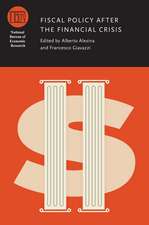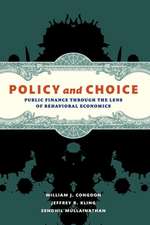Innovations Lead to Economic Crises: Explaining the Bubble Economy
Autor Jon-Arild Johannessenen Limba Engleză Hardback – 22 noi 2016
| Toate formatele și edițiile | Preț | Express |
|---|---|---|
| Paperback (1) | 690.44 lei 6-8 săpt. | |
| Springer International Publishing – 23 iun 2018 | 690.44 lei 6-8 săpt. | |
| Hardback (1) | 694.87 lei 6-8 săpt. | |
| Springer International Publishing – 22 noi 2016 | 694.87 lei 6-8 săpt. |
Preț: 694.87 lei
Preț vechi: 817.50 lei
-15% Nou
132.96€ • 138.83$ • 109.80£
Carte tipărită la comandă
Livrare economică 15-29 aprilie
Specificații
ISBN-10: 3319417924
Pagini: 196
Ilustrații: XI, 181 p. 8 illus.
Dimensiuni: 148 x 210 x 17 mm
Greutate: 0.36 kg
Ediția:1st ed. 2016
Editura: Springer International Publishing
Colecția Palgrave Macmillan
Locul publicării:Cham, Switzerland
Cuprins
Notă biografică
Jon-Arild Johannessen is a professor at Kristiania University College, Norway, where he specialises in knowledge management and innovation. He has a master’s degree in economic history from Oslo University, Norway, and was awarded his PhD in technology and leadership at Stockholm University, Sweden.
Textul de pe ultima copertă
This book examines the link between innovation and economic crises through a systemic philosophy of economic history. Taking the end of the Roman Empire as its starting point, the author guides readers through six economic crises that have occurred up to the present day and uncovers how these may have been triggered by a number of political, economic and technological innovations. The author presents analyses on the Dutch tulip bubble of 1637, the Mississippi bubble in eighteenth-century France, the development of the first limited liability company and the world’s first stock exchange before going on to discuss the latest economic crisis and its links with globalisation and social connectivity following the technological advancement of the internet. The author concludes by explaining how we can use knowledge of the links between innovation and crises to frame a vital new model for policy makers and political leaders. The result is a fascinating insight into the cause of economic crises which will be of particular interest to students and researchers of economic history, financial crises, innovation and political science.
Caracteristici
Descriere
This book examines the link between innovation and economic crises through a systemic philosophy of economic history. Taking the end of the Roman Empire as its starting point, the author guides readers through six economic crises that have occurred up to the present day and uncovers how these may have been triggered by a number of political, economic and technological innovations. The author presents analyses on the Dutch tulip bubble of 1637, the Mississippi bubble in eighteenth-century France, the development of the first limited liability company and the world’s first stock exchange before going on to discuss the latest economic crisis and its links with globalisation and social connectivity following the technological advancement of the internet. The author concludes by explaining how we can use knowledge of the links between innovation and crises to frame a vital new model for policy makers and political leaders. The result is a fascinating insight into the cause of economic crises which will be of particular interest to students and researchers of economic history, financial crises, innovation and political science.




















